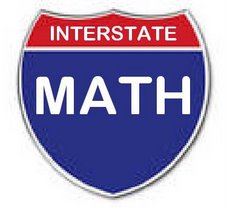The following is a letter to the editor written in response to Liz Bowie's Baltimore Sun article, "Can less equal more?"
January 2, 2007
Dear Ms. Bowie,
I want to thank you for your article's attention to NCTM's Curriculum Focal Points for Prekindergarten through Grade 8 Mathematics, a very important document and topic in the field of mathematics education. I should point out, however, that the following statement in your article reveals a basic misunderstanding of the focal points' impact on potential mathematics curriculum revisions at the state and local levels. You write:
Maryland, for instance, has between 50 and 60 objectives for each grade. The math council would narrow that to three. For instance, for fourth grade, the council says students should learn quick recall of multiplication and division facts, have an understanding of decimals and fractions and an understanding of area, including how to find the area of two-dimensional shapes.
The focal points are not synonymous with mere objectives/indicators. In fact, "These curriculum focal points should be considered as major instructional goals and desirable learning expectations, not as a list of objectives for students to master (NCTM, p. 10)."
Unfortunately, your statement incorrectly leads readers to believe that the focal points are merely a subset of objectives, that can be potentially drawn out from the 50-60 or so indicators contained in a given grade level's Maryland Voluntary State Curriculum (VSC). As Maryland has entered the dialogue/analysis stage to investigate how we will best implement the Curriculum Focal Points into the development of Prekindergarten-Grade 8 mathematics curriculum, you can probably imagine the confusion readers will have when they read the statement in your article.
Additionally NCTM states, "The set of curriculum focal points described here represents an attempt to provide curriculum developers with a clear organizational model for establishing a mathematics curriculum from prekindergarten through grade 8 by identifying for each grade level important content that can build connected and integrated mathematical understanding. The curriculum focal points and their accompanying "connections' to related content outline instructional targets for a basic, integrated, grade-by-grade framework for a coherent mathematics curriculum (p. 7)."
These connections, physically located to the right of the actual focal points for each specific grade level, can be found beginning on page 11 and ending on page 20. Take page 16, for example (Curriculum Focal Points and Connections for Grade 4). Reading the full page, you will find that the entire body of ideas presented here (not just the statements written in bold print) make up a coherent set of related topics, concepts, skills, and ideas, that if taught well, would favorably impact the mathematical learning of a fourth grader.
When approached by local journalists, talk show hosts and producers, teachers, administrators, publishers, bloggers, parents, and other interested individual's about NCTM's Curriculum Focal Points for Prekindergarten through Grade 8 Mathematics and its impact on mathematics in Maryland, I encourage all to thoroughly read the 41 page document for further clarity (See: http://www.nctm.org/focalpoints). It is written very plainly and leaves little room for ambiguity.
Sincerely,
Jon Wray
President-Elect, Maryland Council of Teachers of Mathematics (MCTM)
Wednesday, January 10, 2007
Subscribe to:
Post Comments (Atom)


No comments:
Post a Comment